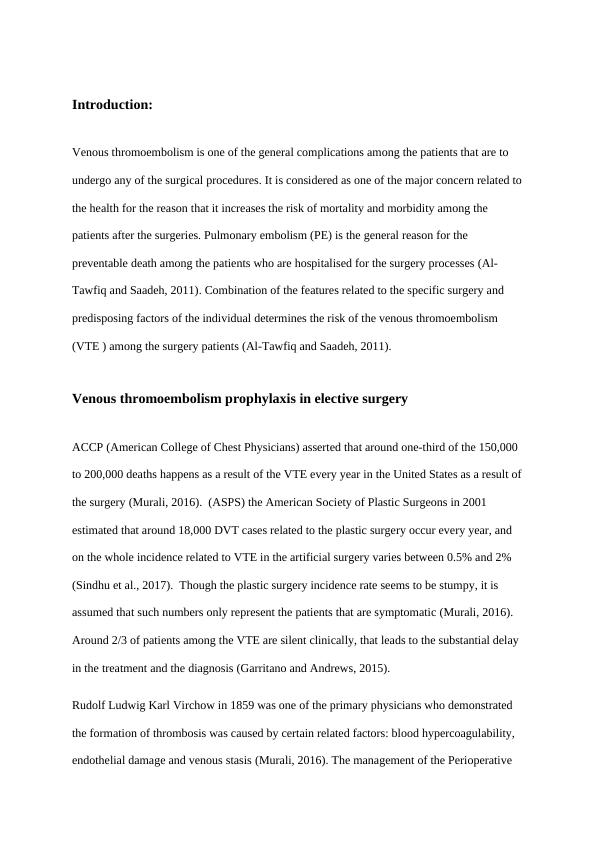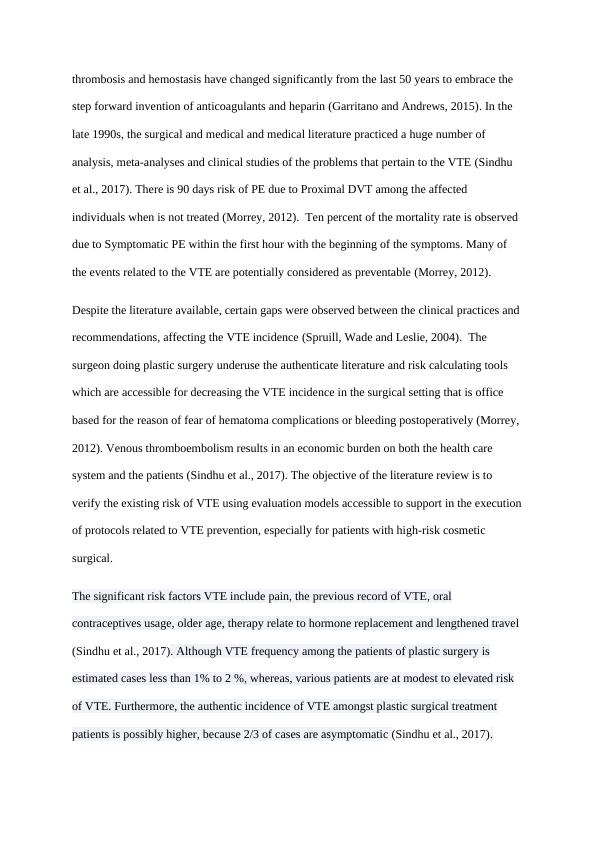Venous Thromboembolism Prophylaxis in Plastic Surgery: A Literature Review
Audit of the use of venous thromboembolism (VTE) prophylaxis in elective surgical patients in WGH, including the incidence of diagnosed/confirmed VTE, use of thromboprophylaxis in different risk groups, and incidence of peri-operative bleeding.
5 Pages1462 Words434 Views
Added on 2023-06-14
About This Document
This literature review discusses the risk factors and prevention methods for venous thromboembolism in plastic surgery, including the underutilization of prophylactic modalities by health professionals. The review also highlights the economic burden and increased mortality and morbidity associated with VTE events.
Venous Thromboembolism Prophylaxis in Plastic Surgery: A Literature Review
Audit of the use of venous thromboembolism (VTE) prophylaxis in elective surgical patients in WGH, including the incidence of diagnosed/confirmed VTE, use of thromboprophylaxis in different risk groups, and incidence of peri-operative bleeding.
Added on 2023-06-14
ShareRelated Documents
End of preview
Want to access all the pages? Upload your documents or become a member.
Journal Article Critical Appraisal for Journal Club Presentation
|5
|693
|397
Aspirin for ACLR, Knee Arthroscopy and Foot/Ankle Surgeries for Prevention of VTE
|13
|2187
|11
Preventing Deep Vein Thrombosis in Total Knee Replacement Patients
|10
|1720
|269


